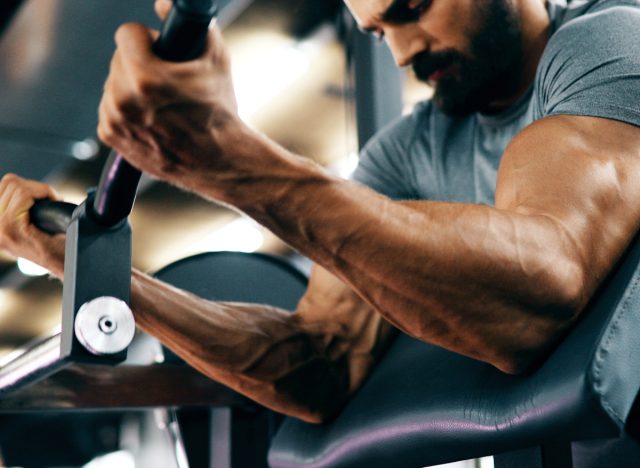When it comes to working out, you always want to make the most out of your sweat sessions. However, sometimes, you may feel a little uninspired, unmotivated, or plain old stuck in a rut. (We’ve all been there!) That’s where progressive overload comes in handy to supercharge your productivity and overall results.
What exactly is progressive overload? It’s a pillar of strength training that requires you to slowly increase the demands put on your body so you’re always challenged, explains Jordan Fernandez, CPT at Trainer Academy. This in turn helps promote strength gains and muscle growth.
“Simply put, the principle of progressive overload means that to continue driving physical adaptations such as strength, muscle size, or endurance, you need to continually increase the resistance level, intensity, or total amount of work performed (or some combination thereof),” Fernandez explains.
If you’re ready to update your workout, listen up. Fernandez outlines everything you need to know about progressive overload training and how it can take your fitness routine to the next level.
How does progressive overload work?

“The most basic example of progressive overload is increasing the amount of weight you lift for a given number of repetitions each week,” Fernandez tells us. “At higher levels of fitness, more advanced strategies are required to continually drive growth.”
In a nutshell, you won’t experience beneficial gains if you continue to do the same exact exercise for the same number of reps using the same amount of weight. Switching things up to keep yourself challenged is the name of the game here. By slowly bumping up the demands you place on your body, you’re helping it get stronger and grow closer to your goals.
Progressive overload is essential to achieve a long-term fitness transformation.

“In the short term, you’re going to see adaptations occur even if you don’t increase the weight, repetitions, etcetera,” Fernandez says. “However, you’re going to quickly plateau with that after about a month or so and you will need to increase the weight if you want to continually grow your muscles, improve your strength, and generally increase your level of fitness.”
If your main goal is to lose fat, you could theoretically stick to the same workout and lose weight, so long as you’re in a calorie deficit. “[That being said,] if you work out as part of your fat-loss program and do not increase the intensity over time, your body will start becoming more efficient and thus burn fewer calories during your workout session, reducing the effectiveness in regards to weight loss/calorie deficit,” Fernandez adds.
As far as any other fitness goal is concerned, progressive overload is not an option; it’s a requirement if you want to experience more than short-term wins.
Alexa Mellardo








